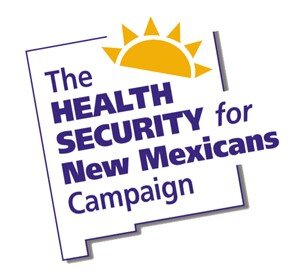The New Mexico Health Security Plan
Rising premiums and copays, shrinking provider networks, no end in sight to drug price increases, and more and more plans with high deductibles – that’s what New Mexicans are facing today. Not only that, but the COVID-19 pandemic has shown us how little we can rely on employer-based health insurance, which can disappear when you need it most. The demand for new approaches has taken center stage.
The New Mexico Health Security Plan, which has been vetted by diverse New Mexicans for years, provides a well-thought-out solution. Three studies, the most recent in 2020, have concluded that covering all or most state residents through one plan controls rising health care costs. The latest study estimated savings of up to $2.7 billion over a five-year period with the Health Security Plan. And with Health Security, virtually all New Mexicans would have health care coverage.
The big picture:
The Health Security Plan will automatically cover most New Mexico residents. Exceptions are federal retirees, active duty and retired military, and TRICARE recipients, all of whom will continue with their federal plans. The tribes, as sovereign nations, may choose to join the Plan. Health plans covered under ERISA also have the option of joining the Plan.
The Plan shifts private insurance to a supplemental role, just as traditional Medicare does. Plan members have guaranteed, comprehensive, quality health care coverage, regardless of income level or health and employment status.
Developing the details:
While the framework of the Health Security Plan has been developed over the years – and is outlined in the 2019 Health Security Act – many details of the Plan have not yet been fleshed out.
In 2021, the legislature set aside $575,000 to pay for the first year of the Health Security planning and design process. Under the auspices of the Office of the Superintendent of Insurance, this process will focus on the operational details of the Plan – such as how providers will be paid, how budgets for hospitals will be negotiated, and the appeal rights of consumers. It will also determine public and private revenue sources to fund the Plan and will determine any waivers that the state will need to apply for.
The Health Security for New Mexicans Campaign’s focus is to ensure that this is a transparent and publicly accountable process that takes into account the input and needs of New Mexicans across the state.
The Health Security Plan:
Guarantees choice of provider, even across state lines (no more networks)
Guarantees an excellent benefit package that must be as comprehensive as the services offered to state employees
Preserves the private delivery system (private physicians, hospitals, etc.)
Provides strong protections for retirees
Reduces overhead costs for health care providers and facilities
Calls for reductions in workers compensation and automobile insurance premiums
Will be run by an independent, nongovernmental commission with 15 geographically representative commissioners

